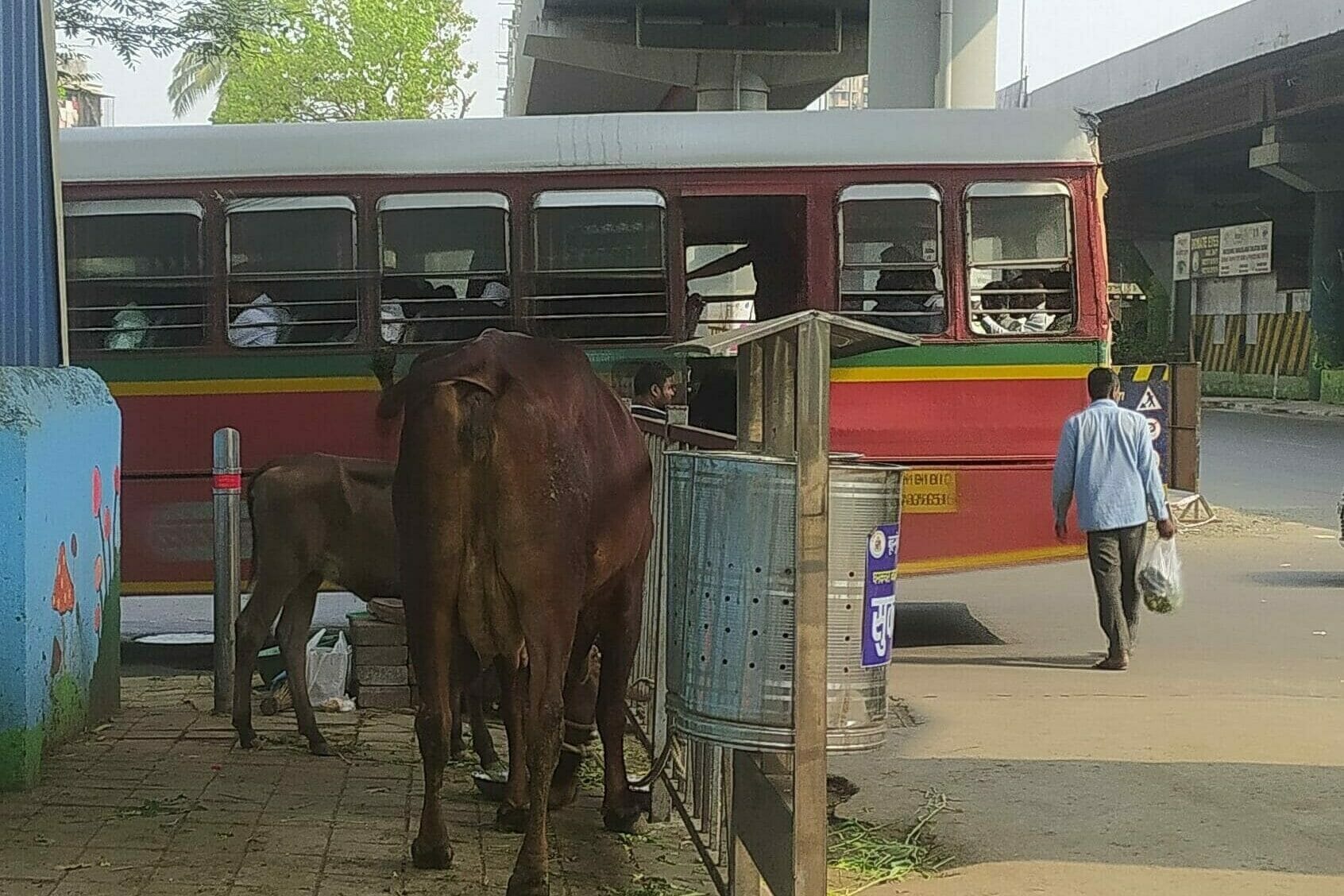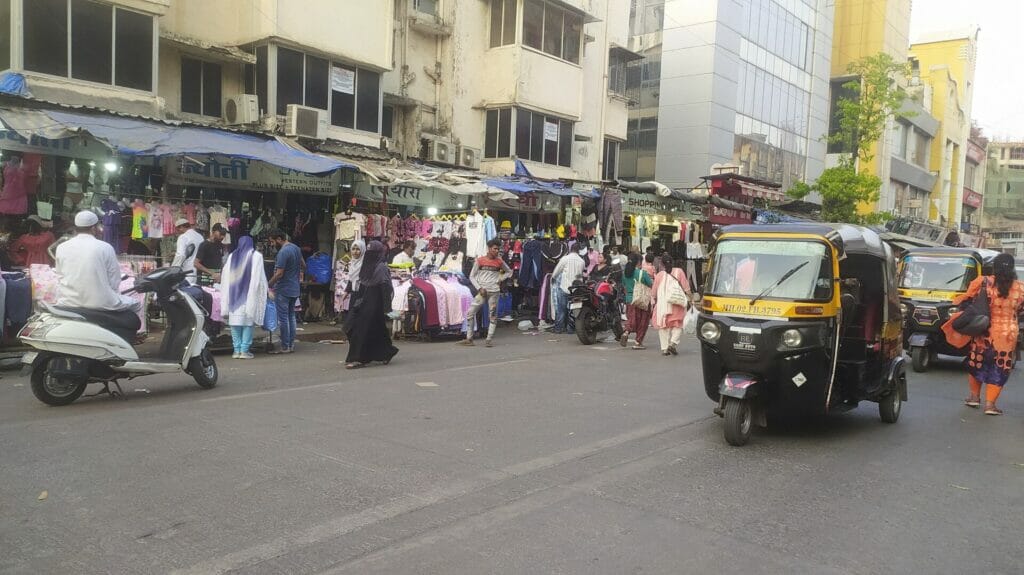The Bombay High Court (HC) recently came down heavily against the Brihanmumbai Municipal Corporation (BMC) demanding that BMC ensure that Mumbai’s footpaths be made walkable for pedestrians especially for handicapped and senior citizens. The HC suo moto asked BMC to clarify its policy on permitting various facilities on footpaths that hampered smooth movement of pedestrians. It took into consideration that walking on Mumbai footpaths has become dangerous as they are uneven, broken, disjointed or encroached and hence, unavailable to walk.
Are footpaths in Mumbai dangerous?
About 51% of all trips made by Mumbaikars are on foot. Even those who travel by bus or train (metro had not yet started back then), had to walk before or at the end of their journeys, the BMC’s Comprehensive Mobility Survey found in 2016.
Unfortunately, statistics reveal that walking on Mumbai’s streets is quite unsafe and dangerous. Pedestrians account for 47% of Mumbai’s road accident deaths. As per the Maharashtra state Economic Survey Report – 2022-23, 272 persons lost their lives, 1620 persons were injured in 1773 accidents in Mumbai in 2022.

The Pedestrians First policy that governs Mumbai’s footpaths, says that the basic principle of footpath planning is to reduce pedestrian conflicts with vehicular traffic to minimum and to ensure that pedestrians do not have to walk in unsafe circumstances and that motorists respect the right of pedestrians. It also states that footpaths would be considered as part of the transportation system just like roadways and railways.
How do you define a pedestrian?
A World Health Organisation (WHO) report on Pedestrian Safety: A road safety manual describes pedestrians as any person who is travelling by walking for at least part of his or her journey. In addition to the ordinary form of walking, a pedestrian may be using various modifications and aids to walking such as wheelchairs, motorised scooters, walkers, canes, skateboards, and roller blades. The person may carry items of varying quantities, held in hands, strapped on the back, placed on the head, balanced on shoulders, or pushed/pulled along. A person is also considered a pedestrian when running, jogging, hiking, or when sitting or lying down in the roadway.
Read more: Political will, citizen action key for Mumbai’s pedestrians
Is the BMC legally bound to provide for footpaths?
In short, yes. Section 61 (m) of the Mumbai Municipal Corporation Act, 1888 mandates BMC to “make adequate provisions for the construction, maintenance, alteration and improvement of public streets, bridges, culverts, causeways and also other measures for ensuring the safe and orderly, passage of vehicular and pedestrian traffic on streets. In Section 3 (w) of the Act clarifies that a street includes “any highway and any causeway, bridge, viaduct, arch road, lane, footway, square, court, alley or passage, whether a thoroughfare or not, over which the public have a right of passage or access or have passed and has access uninterruptedly for a period of twenty years; and, when there is a footway as well as carriageway in any street, the said term includes, both; a footway or footpath.” So yes, the BMC is indeed legally bound to provide and maintain footpaths.
Mumbai introduced a Pedestrians First policy in 2016 that lays down all norms determining footpaths. This policy was broadly derived from the guidelines set by the Indian Roads Congress (IRC), 2012. The BMC is now in the process of updating the norms and incorporating Universal Accessibility guidelines to ease use of footpaths for the differently-abled as also for those using wheelchairs.

What factors determine the width of a footpath?
Ideally, Mumbai footpaths are to be 3.3 metre for roads beyond 90 feet wide. As per the Pedestrians First(PF) policy, this includes 1.8 metre of pedestrian zone, 0.5 metre of dead zone and one metre of furniture zone. “In case of trees, electricity poles, fire hydrants, drainage chambers, utility poles, dustbins, signages, electrical boxes, bus stops etc all of which get included in the one-meter wide furniture zone of a footpath, we calculate the pedestrian zone of a footpath as 1.2 metre from them,” a road department official said. In case of such bottlenecks, the footpath is to be restored back to its original size soon thereafter. For narrow roads that are less than 60-ft wide (18.28 metre), a minimum of 1.5 metre of pedestrian zone is to be maintained.
The IRC reports recommend wider footpaths near crowded places like commercial hubs, metro and railway stations. Fortunately, the city is also introducing about 4 meter wide footpaths in areas like Five Gardens, Bandra Kurla Complex (BKC), Lal Bahadur Shastri Marg, Chembur etc, which have higher pedestrian footfalls. Officials are permitted to work out the width of footpaths considering the user zone of an area. Officials admit that planning footpaths on narrow roads does become a challenge. They said the width of footpaths gets compromised to accommodate road widening to make space for more vehicles and reduce vehicular traffic. Footpaths built prior to 2016, when the PF policy was not in place, may not have the space to comply with new norms. The broad idea of footpaths is to be just wide enough to accommodate pedestrian flow at any given point of time.
BMC plans footpaths on all roads
In his 2023-24 budget speech municipal commissioner Iqbal Singh Chahal mandated that henceforth all roads over 9 m width will have footpaths. He has earmarked Rs 200 crores to identify and build footpaths on such stretches.

What is the status of hawkers on footpaths?
While most hawkers are illegal, there are a few hawkers that do have official vending licenses issued to them which allow them to officially sell from the footpaths. A few milk booths, as also stalls operated by handicapped, do have official permits to set up a small shop and sell from footpaths. According to the PF policy, hawkers would get properly demarcated vending zones on the furniture zone of footpaths.
Does the local ward office have any role in maintenance of footpaths?
While the central roads department determines the width of the footpaths, the various beautification works, the installation of various street furniture like benches, signages, dustbins, etc are handled by the local ward offices. The decision about allocating spaces to licenced vendors as also to milk booths on the footpaths is decided by the local ward offices.
While the footpaths are built by the roads department, they are subsequently handed over to the local ward offices for maintenance. Hence, any complaint about the condition of the footpaths has to be sent to the local ward office, ideally the assistant engineer (maintenance) of the ward. The regular BMC complaint numbers of 1916 or whatsapp on 918999228999 or on the control room of your local ward office.